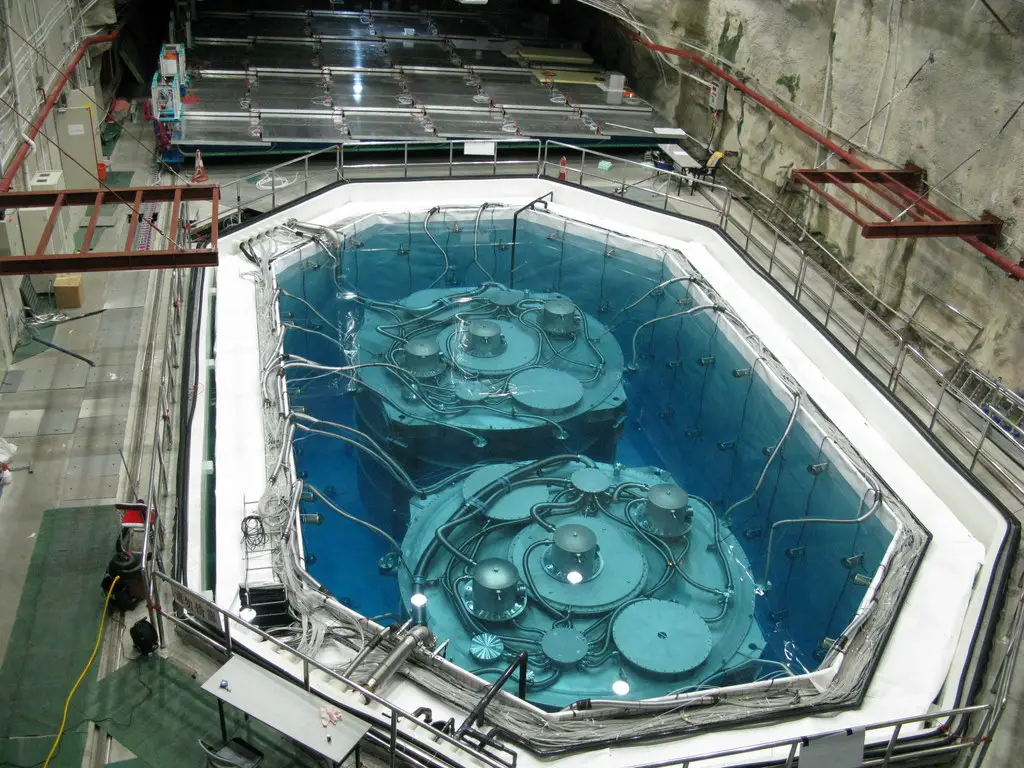Did you know that neutrinos have several different types? These are the three most common neutrinos and what they do in real world applications. You may have heard of them before, but do you really understand their significance in your day-to-day life? Why are they so important and what part do they play in experiments like the IceCube Neutrino Observatory? Let’s dive into it to find out more about muon neutrino and why you need to know about it!
What is a muon neutrino?
A muon neutrino, denoted by νμ, is a subatomic particle that acts similarly to an electron but has a greater mass. It has one negative charge, which makes it an electron-like particle. And like an electron, muon neutrinos do not carry electric charges. A muon’s mass is about 200 times greater than that of an electron—this gives it almost a similar weight as that of a proton. Muon neutrinos are created when cosmic rays hit Earth’s atmosphere, producing high energy particles such as electrons and positrons (the antimatter equivalent of electrons). These particles then decay into muons and muon neutrinos. Muons are unstable elementary particles with a short half-life; they decay after traveling only about 1/10th of a millimeter. Muon neutrinos travel at speeds close to that of light. They interact very weakly with matter, making them difficult to detect. Why study muon neutrinos?: Scientists have recently discovered evidence of a possible fourth type of neutrino—muon neutrinos. If confirmed, these findings could lead to new discoveries related to physics beyond the Standard Model, including supersymmetry and dark matter. This discovery would be significant because there are three types of known types of charged leptons: electrons, muons and taus. Neutrinos, on the other hand, come in just two flavors: electron neutrinos and their counterpart antineutrinos. The possibility of a third type of neutrino opens up many possibilities for future research. For example, if scientists can figure out how to detect muon neutrinos more easily, they may be able to learn more about how these particles behave under different conditions or how their behavior affects other phenomena. What are some experiments studying muon neutrinos?: One experiment called MicroBooNE is currently underway at Fermi National Accelerator Laboratory near Chicago. The experiment studies whether muon neutrinos oscillate from one flavor to another over time, meaning whether they change from being electron neutrinos to muon neutrinos or vice versa. MicroBooNE uses liquid argon as its target material and detectors made of sheets of plastic embedded with gadolinium atoms.
Why does this discovery matter?
What do we mean when we say matter? In physics, we usually refer to particles that are created out of energy, like photons, electrons and quarks. These are known as fermions; they have half-integer spins—1/2 or 3/2 or 5/2 or … . These elementary particles create matter as we know it—everything from a pen on your desk to your cat. Fermions obey Fermi-Dirac statistics (named after Italian physicist Enrico Fermi and British physicist Paul Dirac). Fermions can be thought of as spin one objects. However, not all elementary particles are fermions. There is another class called bosons (named after Indian physicist Satyendra Nath Bose), which includes gluons, gravitons and photons. Bosons have integer spins—0, 1, 2 and so forth. We believe there are four fundamental forces in nature: gravity, electromagnetism, strong nuclear force and weak nuclear force. Each force has its own carrier particle, and these carriers come in two types: bosons and fermions. Gravity is carried by gravitons, which are bosons. The other three forces have their own fermion carriers—photons for electromagnetism, W and Z bosons for strong nuclear force and W and Z bosons for weak nuclear force. Protons and neutrons are made up of quarks, whose properties are governed by strong nuclear force. Protons carry an electric charge because they contain an odd number of quarks (in our case, one up quark and two down quarks). Neutrons have no charge because they contain an even number of quarks (two down quarks and one up quark). Electrons carry an electric charge because they contain an odd number of leptons—namely, one electron and two up antiquarks. Muons have an electric charge because they contain an odd number of leptons—one muon and two down antiquarks. Muon neutrinos only exist in theory. They are produced when cosmic rays collide with atoms in Earth’s atmosphere.
The next step
One of nature’s particles, muons (better known to physicists as a heavy electron), has joined forces with one of science’s most well-established theories—Einstein’s relativity—to change our understanding of how neutrinos travel through space. But first, some background. Neutrinos are subatomic particles that don’t interact with other matter very often. This makes them hard to find and study. They also come in three types: electron, tau and muon neutrinos. The latter two were only discovered in 2002 at Fermilab near Chicago. Muon neutrinos can be produced by colliding protons with carbon nuclei at CERN’s Large Hadron Collider, while tau neutrinos are created when an unstable particle called a B meson decays into a pair of taus and an antineutrino. In order for these particles to travel from point A to point B, they must transform from one type of neutrino into another. This transformation process occurs via a process called oscillation; in short, each type of neutrino transforms into its corresponding partner with a certain probability depending on how far it travels. Scientists have now observed oscillations between muon and tau neutrinos traveling 730 km from CERN to Gran Sasso National Laboratory in Italy. Scientists can now be sure that neutrinos do change types over long distances. This will help them learn more about their properties and how they act. And because there is no upper limit on how long a neutrino could potentially travel before transforming, we may even find out whether Einstein’s theory still holds up all these years later.
![]()
